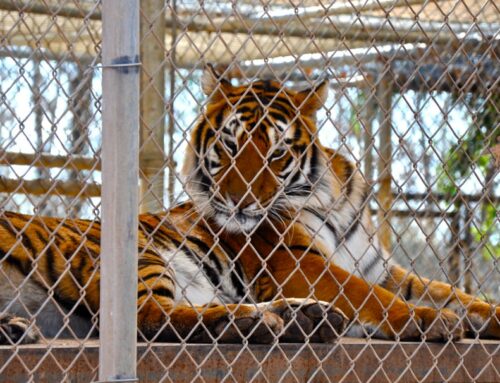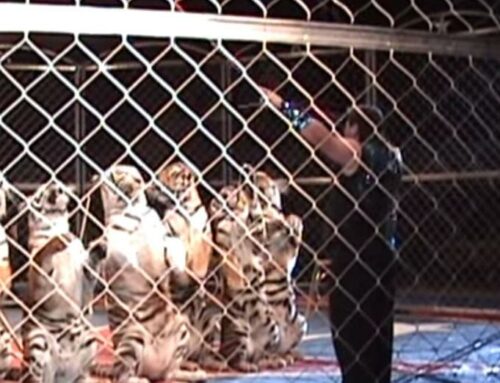Zoo Says Handraised Tigers Suffer 50 Percent Mortality Rate
COLUMBUS ZOO AND AQUARIUMThe Amur tiger cubs were taken from their mother in part because of the storm-caused power failure.
Two newborn tiger cubs are struggling to survive at the Columbus Zoo and Aquarium after being taken from their mother because of their precarious health.
Spokeswoman Patty Peters said the week-old Amur tigers, both males, are beginning to stabilize in the zoo’s animal hospital. The species is also known as the Siberian tiger.
“We’re pretty excited about how well they’re doing,” said Harry Peachey, assistant curator. “ They still have their eyes closed, but they’re getting stronger and stronger. They’re incredibly cute.”
The zoo announced the births yesterday. Mara, their mother, delivered the first cub at 10:41 p.m. on June 28 and the second about four hours later last Friday morning.
Zookeepers observed the births with a camera in Mara’s den and then kept track of their feedings. The first-born nursed several times initially, but keepers became concerned when he did not nurse for several hours after the second cub was born.
“It almost appeared that he was not able or willing to compete with his brother,” Peachey said. “ Mara kept him by her head and was maternal but didn’t position him to nurse.”
The worry intensified when the zoo’s electrical power — and the camera in the tiger den — went out during Friday evening’s storm. Unable to monitor the cubs, keepers decided to remove them and hand-rear them.
“We’d much prefer that the mom raise the babies,” Peachey said. “But we want the babies to survive.”
Each cub was 2 to 3 pounds at birth, which is on the small side for baby tigers, Peachey said. But he said they’ve begun to gain weight and have a strong nursing reflex, so he is optimistic.
He said this is Mara’s first litter, and the survival rate for a tiger’s first litter can be low. For hand-reared Amur tiger cubs, the survival rate is about 50 percent.
The cubs’ father is 9-year-old Foli. He and Mara, who is 5, were put together to mate based on a breeding recommendation from the Association of Zoos and Aquariums’ Species Survival Plan for tigers.
Amur tigers are critically endangered because of habitat loss, poaching for body parts used in traditional Chinese medicine and overhunting of the animals they prey on.
Fewer than 150 live in North American zoos. Tigers were last born at the Columbus Zoo in 1990.
kgray@dispatch.com
@reporterkathy By Kathy Lynn Gray
The Columbus Dispatch Friday July 6, 2012 9:19 AM







Leave A Comment
You must be logged in to post a comment.